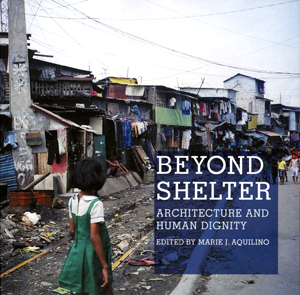Beyond Shelter hopes to “stir a passion for reform.” It asks architects to claim responsibility for protecting people during natural disasters and shaping policy and rebuilding efforts after humanitarian crises—events that affect nearly 200 million people, mostly in the developing world. “There is still no career path that prepares students to work as urgentistes-design professionals who intervene at a crucial moment in the recovery process to produce enduring solutions,” writes Marie J. Aquilino, Beyond Shelter’s editor and a professor of architectural history at the École Spéciale d’Architecture in Paris.

The 25 “reports” - case studies, really - written by architects (such as Deborah Gans and Teddy Cruz) and leaders of nonprofits, research centers, and international agencies (including Victoria Harris, who runs Article 25) highlight where things have gone right when architects have swooped in, acted as advocates, cultural preservationists, negotiators, and design visionaries. In the best entries, they also explain the challenges and failures. Unfortunately, the writing from multiple contributors is uneven. Some entries sound like marketing material for the organization that led the project. In a book where the premise is that people are suffering across the globe and architects wield enormous power to mitigate that suffering, the editor should have limited the repetition of that sentiment. We get it. Tell us how you got it done.
In one of the more successful entries, Dan Rockhill and Jenny Kivett of the Lawrence, Kansas-based nonprofit Studio 804 describe their efforts to design and build the first LEED Platinum building in Kansas after a 2007 tornado wiped out most of the town of Greensburg. Working with graduate students at the University of Kansas School of Architecture and Urban Planning, Studio 804 overcame significant bureaucratic and funding hurdles (though more details on the latter would be helpful to practitioners), as well as community resistance to modern design.
Beyond Shelter is filled with valuable information, with accompanying explanatory photos and graphics, but the design cues meant to differentiate sections and entries only muddle the contents. Major headings such as “Architecture After Disaster” and “Is Prevention Possible?” seem clear enough in the table of contents, but in the middle of the book they confused me. Many of the essays could easily have fit into multiple sections. I also wish author bios came before the entries instead of at the end of the book, so they could give a sense of the writers' stake and interest before we read their texts. For practitioners wanting to understand what has been accomplished, who has accomplished it, and how, Beyond Shelter is an important resource, but one that takes work to use.




Post a comment to this article
Report Abusive Comment